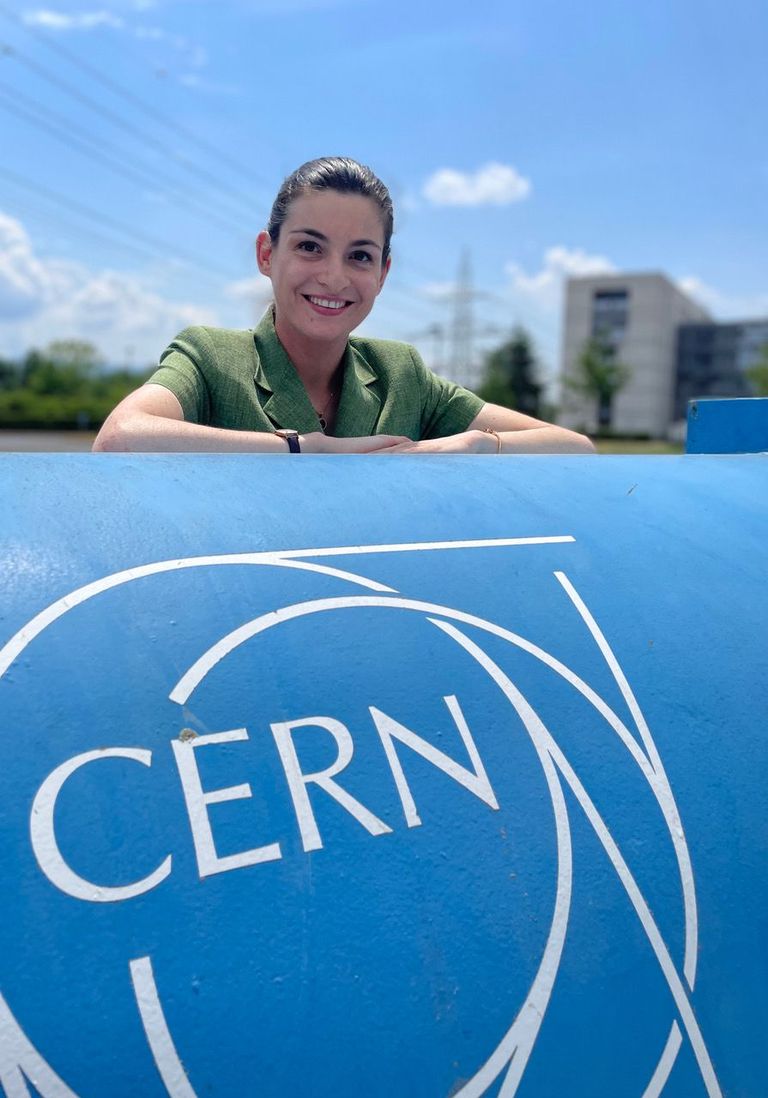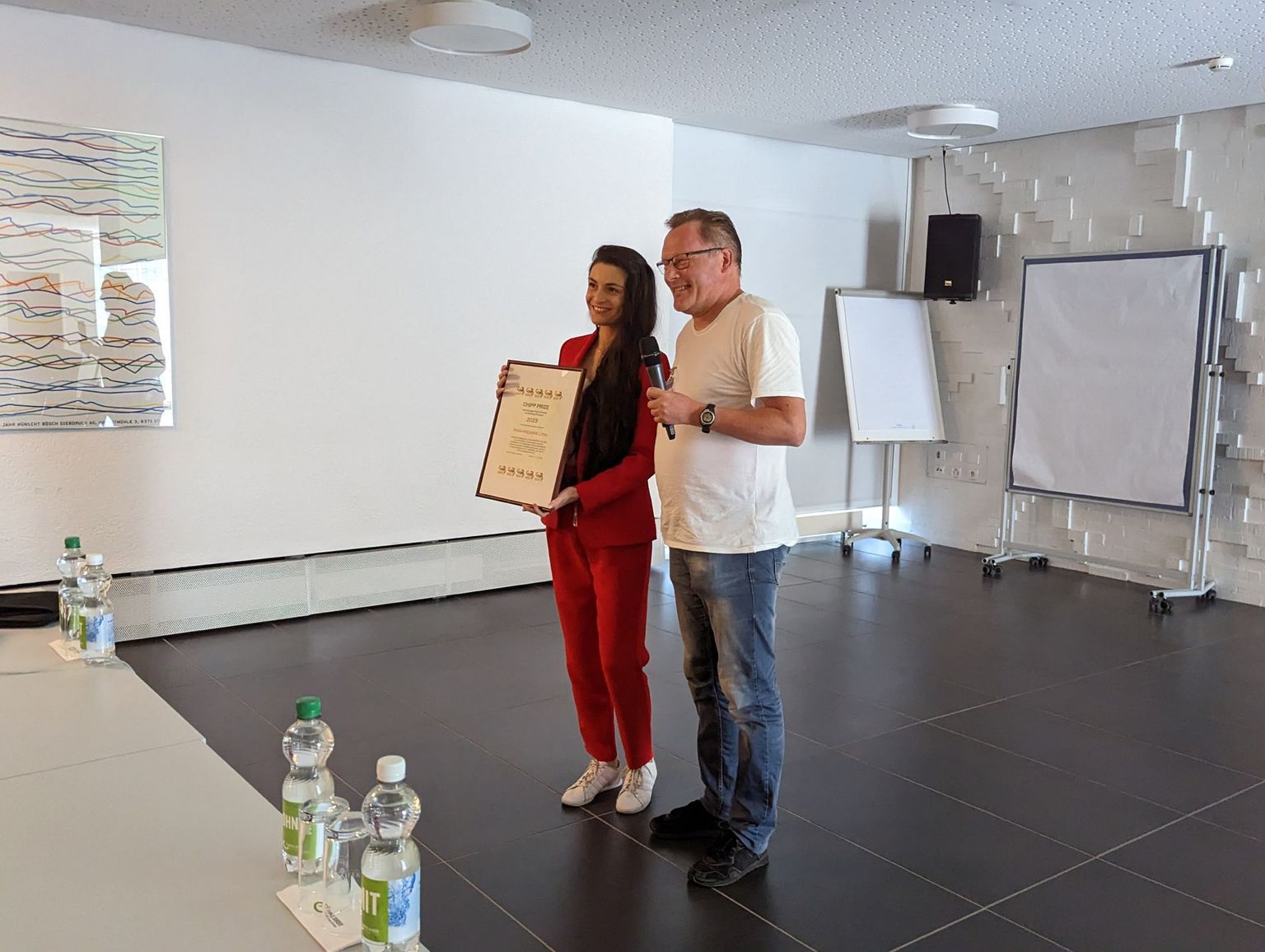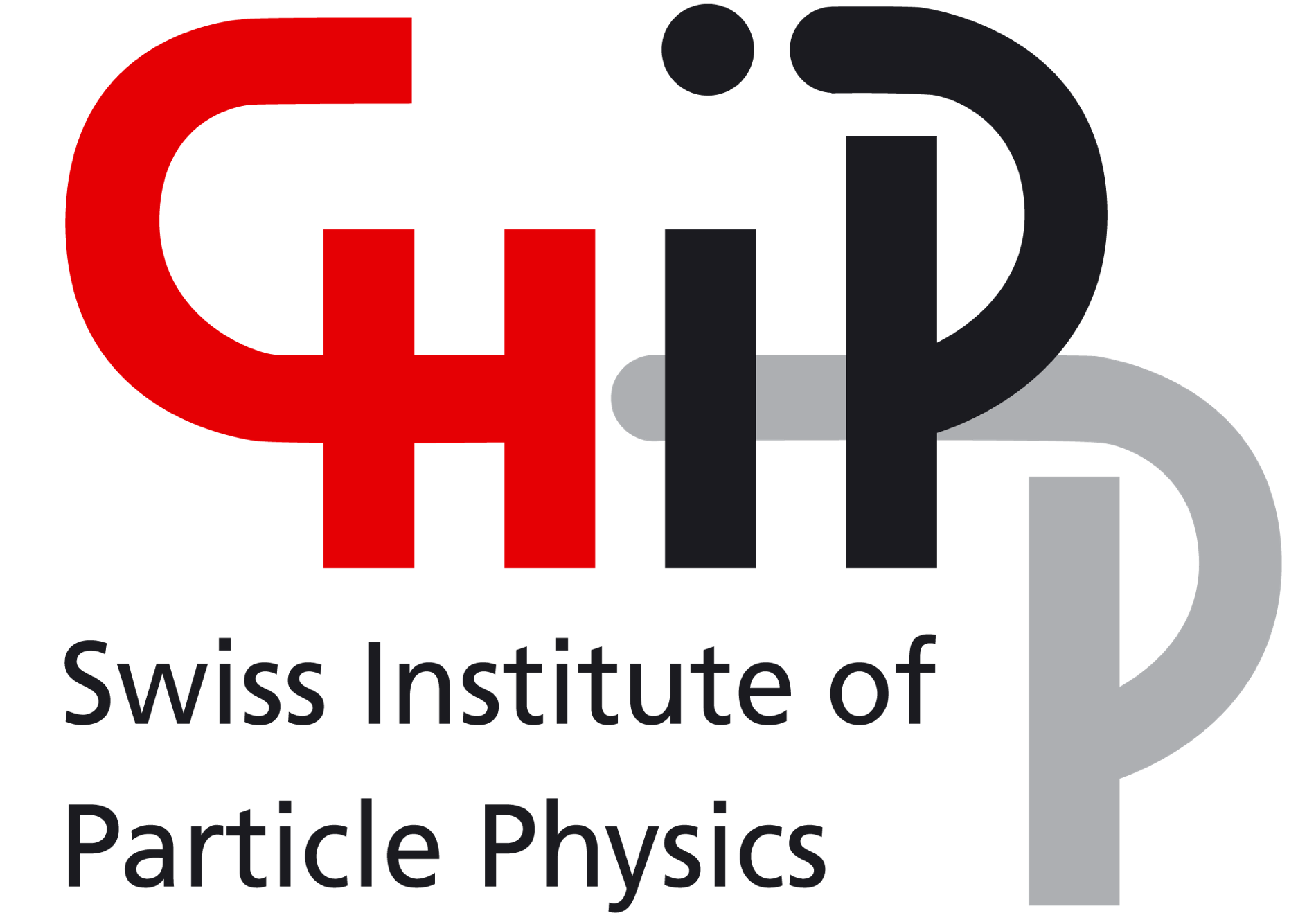CHIPP Prize 2023: On a course to discovery
This year’s CHIPP prizewinner Anne-Mazarine Lyon hunts for signs of new physics in the form of supersymmetric particles and heavy neutrinos.

Already as a child, Anne-Mazarine Lyon knew she wanted to be a physicist. Her only worry back then was that there might not be anything left for her to discover by the time she finishes school. Now a physicist about to complete her PhD, she needn’t worry anymore: in her work for her doctorate alone, she covered two aspects of as-yet undiscovered particles and phenomena. The PhD student from ETH Zürich working at the CMS experiment at CERN is the winner of this year’s CHIPP prize, which the Swiss Institute for Particle Physics hands out every year to the best PhD student in Experimental or Theoretical Particle Physics.
“My PhD is all about the fundamental physics oriented towards answering questions that the Standard Model doesn’t have answers for,” Anne-Mazarine Lyon says. As-yet undiscovered particles could explain strange phenomena or provide candidates for dark matter, the most sought-after particle in current particle physics. Her searches concentrate on two rather different areas beyond the Standard Model of particle physics: supersymmetry and heavy neutrinos (sometimes referred to as sterile neutrinos or heavy neutral leptons).
Supersymmetry is a theory that predicts the existence of a superpartner to every known particle of the Standard Model. Their properties would be similar to their real-world partner, only that every fermion (a class of particles such as the electron, the quarks and the neutrino) would get a superpartner from the boson class – the force carriers like the gluon or the photon – and vice versa. If proven to exist, it could for example explain why the Higgs particle is comparatively light and provide a possible candidate for dark matter. “However, we haven’t been able to find any evidence for supersymmetry yet,” says Anne-Mazarine Lyon. “The symmetry must be broken somewhere. I tried to find it in the proton-proton collisions producing jets and missing energy.” Because sometimes what is missing can speak volumes about what was once there.
Together with a small team at ETH Zurich and institutes in California, she looked through the complete data set collected by the CMS detector at the LHC in its second run. According to theoretical prediction, a likely occurrence of supersymmetry in LHC collisions would be the production of squarks and gluinos, the respective superpartners of the quarks and gluons. In the scenarios the team considered, the supersymmetric particles would always be produced in a pair, and while unstable, they would decay into quarks and the lightest supersymmetric particle, in this case a neutralino, that escapes the detection. Of course, some processes from the Standard Model could mimic the signatures of these decays. A discrepancy between the number of events predicted from these well-known processes and the number actually collected in the detector could be a hint that something was created inbetween that left the scene undetected… a supersymmetric particle, for example.
Now don’t get your hopes up – it would be a sensation if supersymmetry was discovered, let alone by a PhD student in her thesis work. Anne-Mazarine and her colleagues didn’t find it. But that’s a good thing for many reasons. First of all, it sets new limits for similar searches in the future. “We explored a large region of phase space and set a new limit on the mass of the supersymmetric particles improved by about 100 GeV with respect to the previous results,” the prizewinner explains. “What is more, I experienced the publication process, which has helped me enormously in my second search because here, I am the coordinator for the paper.”
This second search closes the loop to young Anne-Mazarine who was fascinated by antimatter. It was not just the fact that there was a thing called antimatter, but the idea that it must have once, just after the Big Bang, existed in equal amounts to regular matter, with which it should have fully annihilated. Why is there still matter at all in our universe? What is the mechanism behind that? We still don’t know, but every analysis brings us a little bit closer to finding out.
“In the Standard Model, particles can either be right-handed or left-handed. Except for neutrinos: they are only left-handed. It makes you wonder, doesn’t it – is there something missing there?!” the physicist asks. So in her second PhD analysis, she went on the hunt for those right-handed neutrinos, also called “heavy” or “sterile” neutrinos. If they exist, they would have a huge impact on our understanding of the world. They could not only provide a mechanism for the asymmetry between matter and antimatter, but could as well explain the nature of the very small, yet non-zero, mass of the neutrinos and provide an answer to the mystery of dark matter …
Then comes the question of how to search for those particles. For the first time using the CMS detector, the search targets scenarios where the heavy neutrinos are produced in the decays of B mesons, particles consisting of two quarks, one of which is a b quark or a b antiquark. This class of processes is particularly interesting, as those decays are a very abundant source of neutrinos, and hence, potentially, of heavy neutrinos. “Such a search was initially not thought to be possible to be carried out with the CMS detector, until the collection of a special data set enriched in B meson decays in 2018”, the analyst explains. Another challenge from this search is that it targets signatures where the heavy neutrinos are long-lived, giving access to an interesting region of the phase space, while making the analysis of the data even more complex. The work was done from scratch and not only was she involved in the design of all of its aspects, but was also in charge of the coordination between the two institutes contributing to this ambitious analysis. “We needed to exploit the best out of the detector; it was quite a challenge, but also extremely interesting,” Anne-Mazarine says. The paper hasn’t been published yet, so watch this space for further news …
Her PhD supervisor Günther Dissertori, Rector of ETH Zurich, is full of praise for his student. “Anne-Mazarine has very profound knowledge of both theoretical and experimental physics that altogether has allowed her to make significant contributions to the CMS experiment. Her maturity, her professional way of working and interacting with other colleagues, and the scientific rigour are simply outstanding.”
What Anne-Mazarine Lyon will do after she finishes her PhD is open. Teaching and mentoring young students was one of the activities she also really enjoyed during the dissertation. So a future where she can aim at making discoveries and guide the next generation into particle physics would be a natural choice.
Barbara Warmbein



